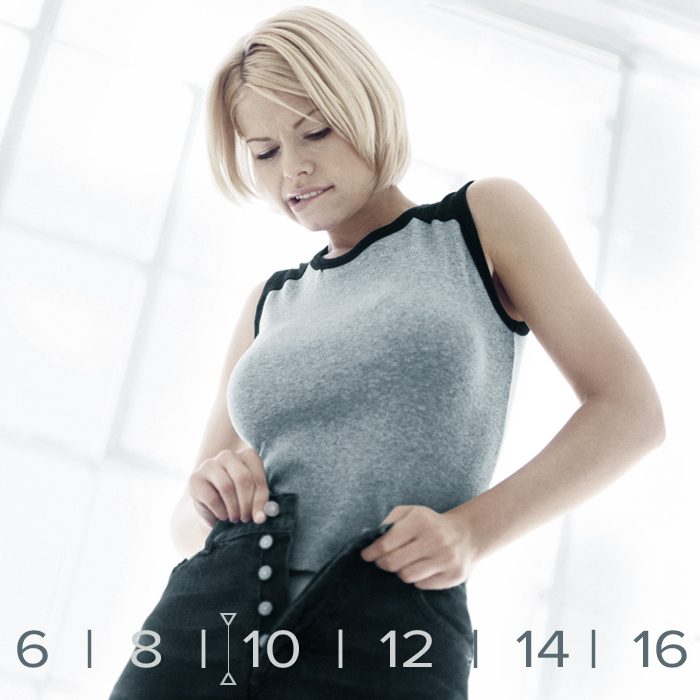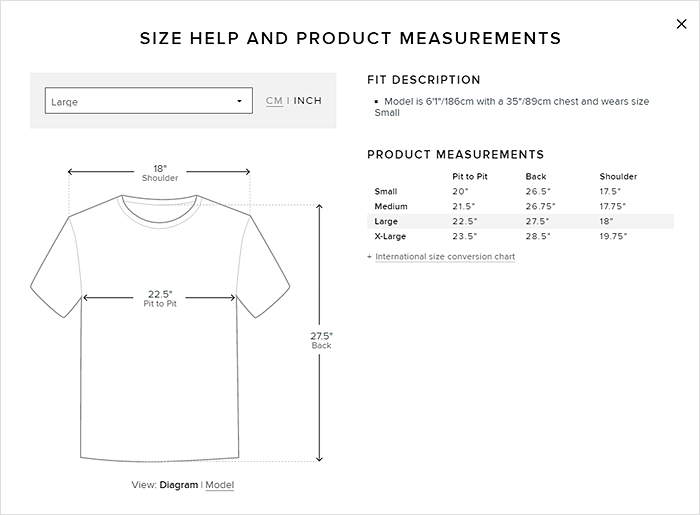Sizeable Issue for Online Fashion Retailers

For anyone new to Fashion Retail, one of the factors that may catch you unawares is just how many returns you need to deal with. Many a new business has come a cropper because business owners forgot to factor in the significant cost of processing returns. Shopping online started off by replacing the catalogue / list shopping of old, and the mostly women who shopped in this manner, were already accustomed to buying multiple sizes of each item - just in case the item did not run true-to-size!
A recent Daily Mail headline reads along the lines of ’Women who indulge in returns are blamed for profits slump at high street chains’. The way it works is that you buy one size smaller and one size larger than your usual size, therefore 3 of the same item, because you are never sure exactly what size said item will turn up as - meaning 2 of the 3 purchases will be returned. Most women I know range across 3 or more size across different retailers, I myself buy clothing from Medium to XXL - a huge disparity in sizing. Some brands are known for being generous with their sizing, while others seem to be modelled on the tiniest of people. Yet the disparity is not confined to being based on one retailer’s sizing versus another (although this is obviously a factor), but also within a single retailer’s offerings, often even variances for the same item. Sometimes buying 3 copies of the exact same item yields worryingly varied results.
It does not make it easier when retailers like Ted Baker have their own arbitrary numerical scale of sizes 1-7 for men for instance. Some use suit sizing - i.e. Chest size, some use S | M | L and some use some arbitrary ascending numeric or symbolic scale. Yet within each there are too many variances. Clothing is different to say packaging sizes - 1 Litre, 1 Kg etc. as clothing sizing typically runs to more than one variable - sure you have the same sliding scale of core sizing, but then you also have slim-fitting | regular | loose-fitting in terms of how the garment clings or drapes.
A recent BBC article reports ’Most online clothes shoppers send something back’ - in fact it quotes a figure of 63%. I’m sure that not all of these do the catalogue shopping technique of buying 3 sizes and sending at least 2 back, but there are significant numbers of these kinds of shoppers.
It’s funny that even with something like shoes - the scale is kind of broken, as some shoe retailers like Salomon come up half a size too small, while say Prada are at least half a size too big - meaning if you’re a size 8, you need to buy 8.5 for Salomon and 7.5 for Prada - back to the old 3 different sizes again.
I feel here that Fashion retailers themselves can do much more to tackle this problem and surely the EU can help by introducing a fully standard sizing scale with the corresponding quality mark. Consumers would then be able to buy with a far higher degree of confidence, which should lessen the number of returns. While sizing is a key issue with returns, there are indeed other factors like poor photography which represents the item in the wrong colour, or does not adequately highlight fabric texture or detailing - such that what you receive often looks quite different to what was pictured.
While we wait for the new quality mark standard to arrive, I really like the way that End Clothing do their sizing help - displaying the actual item’s dimensions against a visual template - so you now exactly what size of garment you are getting - as per following screencap:


Did you find this content useful?
Thank you for your input
Thank you for your feedback
Upcoming and Former Events
Affino Innovation Briefing 2024
Webinar - Introduction to Affino's Expert AI Solutions - Session #2
Webinar - Introduction to Affino's Expert AI Solutions - Session #1
PPA Independent Publisher Conference and Awards 2023
Meetings:
Google Meet and Zoom
Venue:
Soho House, Soho Works +
Registered Office:
55 Bathurst Mews
London, UK
W2 2SB
© Affino 2024






















